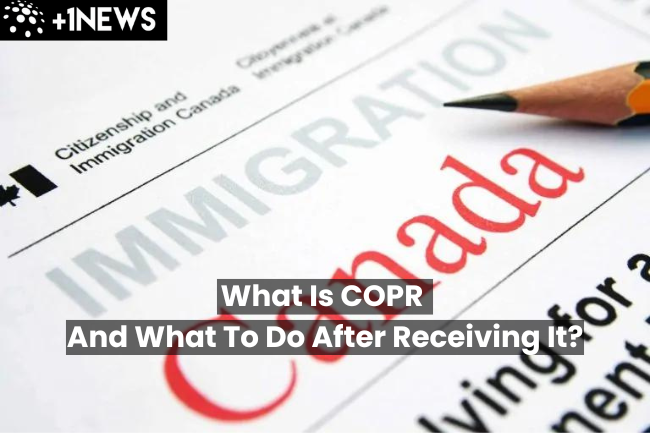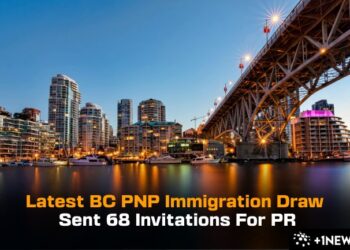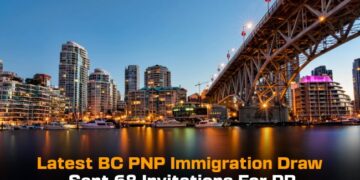COPR stands for Confirmation of Permanent Residence. It is a document that proves that you have been approved to become a permanent resident of Canada. It is not a visa or a travel document. You need it to complete your immigration process and get your permanent resident card.
Jump to:
How do you get COPR?

You get COPR after you apply for permanent residence through one of the immigration programs, such as Express Entry, Provincial Nominee Program, Family Sponsorship, etc.
Eligibility criteria:
You need to meet the eligibility criteria, which are:
- Submit your application online or by mail.
- Pay the required fees.
- Provide all necessary documents and information
Application process:
If your application is approved, you will get emails from a mailbox ending in cic.gc.ca from Immigration, Refugees and Citizenship Canada (IRCC) with instructions on how to confirm your permanent residence online.
Avoid creating your account in the portal independently, as it can delay the process. Instead, follow the instructions in the email, and IRCC will create an account for you.
Once your Express Entry application is approved, you will receive two crucial documents:
- Confirmation of Permanent Residence: Contains your personal details and photograph.
- Permanent Resident Visa (if applicable): Required for citizens of certain countries.
Print the COPR and keep it safe for your landing process and permanent resident card application. Ensure the information on the COPR matches your passport. If there’s a mistake, contact IRCC or authorities through your account.
Permanent Resident Cards:
After becoming a permanent resident, you’ll receive an e-COPR through the portal to prove your status in Canada.
- Submit a photo through the portal to begin the process of receiving your first PR card.
- No need to apply separately for the PR card.
While you wait for your PR card, you can use the printed and signed e-COPR to prove your permanent resident status and apply for eligible government benefits and services.
What to do after receiving COPR?
Depending on where you are when you receive your COPR, you may have different steps to follow.
If you are outside Canada
You can use your COPR document to travel to Canada. However, you also need a valid visa or an Electronic Travel Authorization (eTA) to enter Canada. If you don’t have one, you will need to apply for one before you travel.
Arrival in Canada:
When you arrive in Canada, ensure you have the following:
- Valid passport and travel documents (regular, private citizen passport).
- Confirmation of Permanent Residence and permanent resident visa (if provided).
- Proof of funds to support yourself and your family
Meeting with the Canada Border Services Agency (CBSA) Officer
Upon arrival in Canada, you’ll meet with a CBSA officer, who will:
- Verify that you’re entering before or on the expiry date shown on your COPR.
- Confirm your identity using biometrics.
- Ask a few questions to ensure you meet the immigration terms.
If everything is in order, the officer will stamp your COPR document and welcome you to Canada.
Important Tips
- Keep your passport and travel documents with you at all times during entry to Canada.
- Be truthful and provide complete information to the CBSA officer.
- If you’re entering Canada with more than CAN$ 10,000, declare it to the CBSA officer.
If you are inside Canada
You don’t need to travel outside Canada to complete your landing process. You can do it online through the IRCC website. You will need to upload a copy of your COPR document and a photo of yourself. IRCC will review your documents and confirm your permanent resident status.
Use Your COPR Before it Expires
Your COPR document is valid until the expiry date on it or until your passport expires, whichever comes first. You should try to travel to Canada before your COPR expires because it cannot be extended.
If you don’t use the COPR before it expires, You will likely need to reapply for permanent residence and start the entire application process again.
What happens next?
After you confirm your permanent residence online or at the port of entry, you will become a permanent resident of Canada.
- Becoming a permanent resident: You gain the right to live, work, study, and access healthcare and social services in Canada. Remember to abide by Canadian laws and values.
- Getting your permanent resident card: Within 90 days of confirming your status, you’ll receive your permanent resident card by mail. Keep it safe and carry it when traveling outside Canada.
- Applying for Canadian citizenship: After living in Canada for at least three years as a permanent resident, you can apply for Canadian citizenship. This grants you additional rights and benefits.
Conclusion
COPR is an important document that shows that you have been approved to become a permanent resident of Canada. You need it to confirm your status online or at the border and get your permanent resident card. After receiving COPR, you should follow the instructions from IRCC before traveling or settling in Canada.
Related Articles in our Newcomers Resources:













I was recommended this blog by my cousin. I’m not sure whether this post is written by him as nobody else know such detailed about my
difficulty. You are amazing! Thanks!